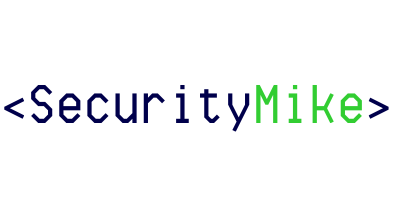Because insider threats originate from within, they present significant challenges for organizations. People with authorized access to sensitive data and systems are the source of these threats. Although identifying insider threats can be difficult, there are some signs that could be relevant. Important red flags consist of:.
1. Abrupt alterations in work habits or behavior.
2.
Key Takeaways
- Unusual behavior, access to unauthorized information, and sudden changes in attitude can be signs of insider threats.
- Motivations for insider threats can include financial gain, revenge, or ideology.
- Effective security measures to mitigate insider threats include access controls, monitoring, and regular security training.
- Creating a culture of trust and transparency in the workplace can help prevent insider threats by promoting open communication and accountability.
- Educating employees on the risks and consequences of insider threats can help them recognize and report suspicious behavior.
- Technology can be utilized to detect and prevent insider threats through monitoring software, access controls, and data encryption.
- Developing a response plan for dealing with insider threats is crucial for minimizing the impact and preventing future incidents.
An increase in absences.
3. Reduced effectiveness at work.
4. Changes to work schedules that make no sense.
5. Expressions of dissatisfaction with one’s job or a lack of loyalty to the company.
6.
Past disciplinary matters. Other warning signs could be:.
1. unusual curiosity in private information outside the purview of the position.
2. attempts to gain access to systems or files without authorization.
3.
inquiries concerning security measures made outside of the scope of work.
4. unexpected start of one’s own financial problems.
5. significant pressures in life. There may be a greater chance of insider threats for workers who display these behaviors. Organizations can address possible security risks & prevent serious breaches by proactively addressing these indicators before they become more significant.
Understanding Insider Threat Motivations: Financial Gain is a Common Motivator. Financial gain is a common motivation for insider threats. Individuals who are financially struggling or motivated by greed may have a higher propensity to commit crimes like fraud, intellectual property theft, or selling confidential information to outside parties. People who feel underappreciated or underpaid by their company may also be more likely to participate in insider threat activities for monetary gain. Retaliation and Vengeance: A Want to Cause Damage. Resentment or revenge are two more reasons why people make insider threats.
Workers who experience actual or perceived injustice from their employer may attempt to cause the company harm by divulging private information, breaking into systems, or carrying out other nefarious deeds. This could be in reaction to a disciplinary action, a poor performance review, or what you believe to be unfair treatment. In addition, people who are personally resentful of their employer or who harbor grudges against it could be inspired to carry out insider threat operations as punishment. Resolving Fundamental Problems and Establishing a Happy Workplace.
Organisations can mitigate the risk of insider threats by fostering a more positive and supportive work environment & addressing underlying issues by taking steps to understand these motivations. Organizations must put in place strong security measures that address both technical flaws and human factors in order to reduce the risk of insider threats. Access controls & monitoring systems that restrict employees’ access to sensitive data and systems in accordance with their job duties are an important part of security measures. This can lessen the possibility of insider threats and help prevent unwanted access.
Organizations should also periodically assess and update their access control policies to guarantee that workers have access to only the data and platforms required for their job responsibilities. Using tools for behavior analytics and employee monitoring is another crucial security measure. These tools can assist organizations in identifying anomalous behavior or access patterns that might point to possible insider threats. Organizations can take proactive steps to address possible insider threats before they develop into significant security breaches by keeping an eye on employee activity and spotting anomalies.
To further inform staff members about the dangers of insider threats & how to spot and report suspicious activity, organizations should regularly provide security awareness training. Building an Environment of Trust & Transparency in the Workplace: Reducing the danger of insider threats requires an environment of trust & transparency in the workplace. Employees are less likely to take part in actions that could endanger the company when they feel appreciated, supported, and trusted by it. Transparency and open communication within the company are two ways to cultivate a culture of trust.
This entails encouraging staff members to share their opinions and concerns as well as regularly updating them on company policies, practices, and updates. Moreover, companies ought to place a high priority on fostering positive workplace cultures and solid employee relationships. This can be accomplished by implementing programs like mentorship opportunities, open-door policies that let staff members voice concerns and ask for help when they need it, & employee recognition programs. Organizations can lower the risk of insider threats by fostering a friendly and inclusive workplace culture, which lessens the possibility that workers will feel underappreciated or dissatisfied.
Raising awareness and encouraging a security-conscious culture among staff members requires educating them on the dangers & repercussions of insider threats. It’s possible that many workers are unaware of the possible effects of their actions on the safety & reputation of the company. Organizations can assist staff members in identifying questionable conduct and comprehending the possible repercussions of participating in insider threat activities by offering thorough training on insider threats. Organizations should also stress how important it is to report any suspicious activity or concerns to management or the relevant security staff.
Organizations may improve their capacity to identify & handle insider threat activity before it leads to significant security breaches by promoting open communication and developing a culture where workers feel comfortable reporting possible insider threats. Also, companies should keep staff members informed about any changes to security policies & procedures as well as the most recent security best practices. UBA stands for user behavior analytics.
One such technology is user behavior analytics (UBA), which analyzes employee behavior patterns and detects possible insider threats using machine learning algorithms. Data Loss Prevention (DLP) Methodologies. Organizations can also put in place data loss prevention (DLP) systems, which keep an eye on and regulate sensitive data transfers across the network. DLP systems can assist in stopping workers from unintentionally or purposely disclosing private information to parties outside the company. Endpoint Response & Detection (ERR) Systems.
Organizations should also think about putting endpoint detection & response (EDR) systems in place, as these offer the ability to monitor and respond in real-time in order to identify and neutralize insider threat activity. Organizations should work on developing a response strategy for insider threats in case they arise, in addition to putting proactive security measures in place. This strategy should include precise procedures for spotting and dealing with possible insider threats, along with guidelines for looking into occurrences and minimizing harm brought on by insider threat activity.
Establishing clear communication channels for reporting and elevating possible incidents, as well as designating specific personnel to handle insider threats, are critical for organizations. Also, to make sure that all staff members are aware of their roles and responsibilities in the event of an insider threat incident, organizations should routinely test their response plan through simulated exercises and scenarios. Organizations can mitigate the effects of insider threat incidents & promptly safeguard critical data and systems from additional damage by implementing a clearly defined response plan. In summary, insider threats are a major security risk to organizations and, if left unchecked, can cause severe financial & reputational harm. Businesses can greatly lower the risk of insider threats & safeguard their sensitive data and systems by identifying the warning signs of insider threats, comprehending the motivations behind such actions, putting in place effective security measures, fostering a culture of trust and transparency at work, training employees on the dangers and repercussions of insider threats, using technology to detect and prevent insider threats, & creating a response plan for handling such incidents.
If you’re interested in learning more about the risks of data leakage in companies through employee use of chat platforms, check out this article on Security Mike. Understanding and mitigating insider threats in your organization is crucial, and being aware of potential data leakage risks is an important aspect of that.
FAQs
What is an insider threat?
An insider threat refers to the potential for employees, contractors, or business partners within an organization to misuse their authorized access to systems and data for malicious purposes.
What are the types of insider threats?
Insider threats can be categorized into three main types: malicious insiders who intentionally harm the organization, negligent insiders who inadvertently cause harm, and compromised insiders whose credentials are used by external attackers.
What are the common indicators of insider threats?
Common indicators of insider threats include unauthorized access to sensitive data, unusual network activity, frequent access to unauthorized areas, and attempts to bypass security controls.
How can organizations mitigate insider threats?
Organizations can mitigate insider threats by implementing security best practices such as access control, monitoring and auditing of user activities, employee training and awareness programs, and implementing a strong incident response plan.
What are the potential consequences of insider threats?
Insider threats can lead to financial losses, damage to the organization’s reputation, loss of intellectual property, and legal and regulatory consequences. It can also disrupt business operations and cause significant harm to the organization.

